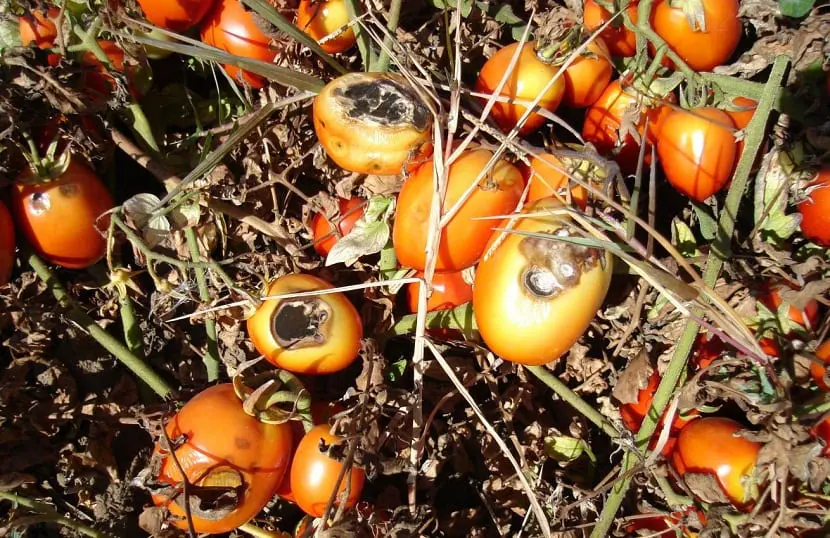It is normal for the tomato crop to be affected by numerous diseases, pests and viruses; Among these is the ascomycete fungus known as ” alternaria “, which consists of a decomposition that affects the appearance of the plant.
In this post, we will be talking about what tomato alternaria is , the symptoms it produces and its treatment, as well as some other aspects of this fungus.
Index
- 1 What does tomato alternaria mean?
- 2 What are the symptoms of tomato alternaria?
- 3 What are the optimal conditions for alternaria to occur?
- 4 How to combat tomato alternaria?
- 5 How should the treatment be applied?
- 6 What plants does alternaria affect?
 What does tomato alternaria mean?
What does tomato alternaria mean?
Alternaria is a fungus that attacks different species, a polyphagous fungus , which has the ability to survive for 12 months in the remains of those tomato plants that are sick, it also presses the inoculum of the plants.
This fungus generally invades the tomato through growth cracks, injuries generated due to sunstroke, insect bites and different blows. However, it is also possible for it to do so directly through the intact epidermis of leaves, stems and fruit , so action is needed quickly, as once alternaria settles in orchards it begins to wilt everything.
What are the symptoms of tomato alternaria?
In general, alternaria appears on the lower leaves and progressively spreads to the rest of the plant , until it completely affects its leaves, stem, and even its fruits.
Both on the stem and on the petiole, dark wounds with elongated shapes and concentric rings are generated. In the tomato there are several brown spots that in some cases have a yellow halo, which could cause the pinnae to dry out.
Those varieties that are late maturing usually have greater resistance to this fungus. However, from the time of alternaria invasion , until symptoms appear, it may take around 8-10 days, as long as it is in optimal conditions.
What are the optimal conditions for alternaria to occur?
Those conditions that favor the spread of alternaria are normally the spread of the fungus through wind, insects, water, agricultural machinery, etc. However, the spores sprout and contaminate the leaves when they are wet, this is because the fungus is usually more active in hot or moderate temperatures, as well as in a humid environment ; this is the reason why the risk increases significantly during the rainy seasons.
Likewise, it should be noted that the attack is usually worse whenever the plants are stressed due to fruiting due to lack of nitrogen or under attack by nematodes.
How to combat tomato alternaria?
 When alternaria manages to invade the crop, it is not easy to control it ; therefore, it is necessary to inspect the crop at least twice a week in search of plants that present the symptoms caused by this disease, before beginning the application of any type of fungicide.
When alternaria manages to invade the crop, it is not easy to control it ; therefore, it is necessary to inspect the crop at least twice a week in search of plants that present the symptoms caused by this disease, before beginning the application of any type of fungicide.
How should the treatment be applied?
The first step to treat tomato alternaria consists of the application of 15 liters of the previously mentioned fungicide (Daconil 50 SC) through a spraying backpack that allows the product to be sprayed.
Subsequently, the application of the Alexin fertilizer must be carried out , in order to protect and fertilize the soil in which the plant is located and to do so, for every 10-15 liters of water, one envelope of fertilizer must be mixed, and then pour it over the ground using a watering can.
After 3-4 days, it is necessary to reapply Daconil 50 SC on those plants that have been infected by alternaria. If after a week the plant is still sick, a third and final application of the product should be made.
What plants does alternaria affect?
Apart from the tomato, alternaria also affects aubergines, potatoes and any other solanaceous plant .

